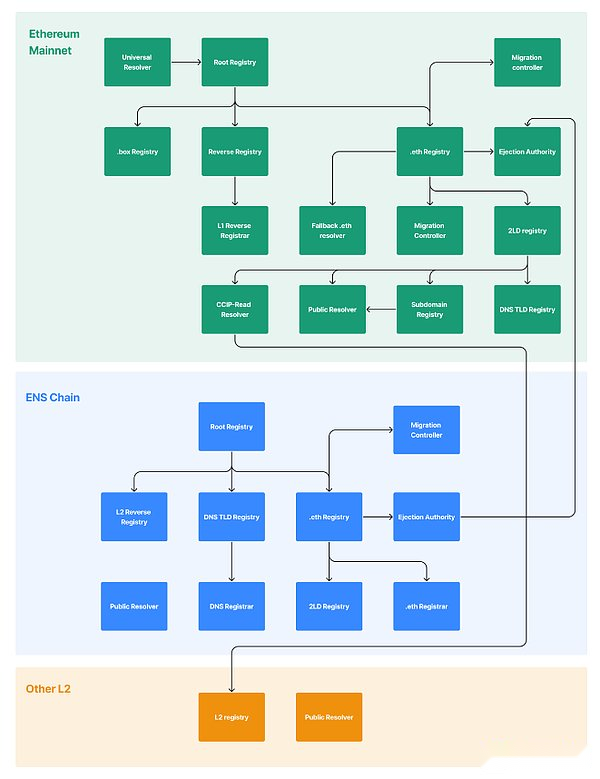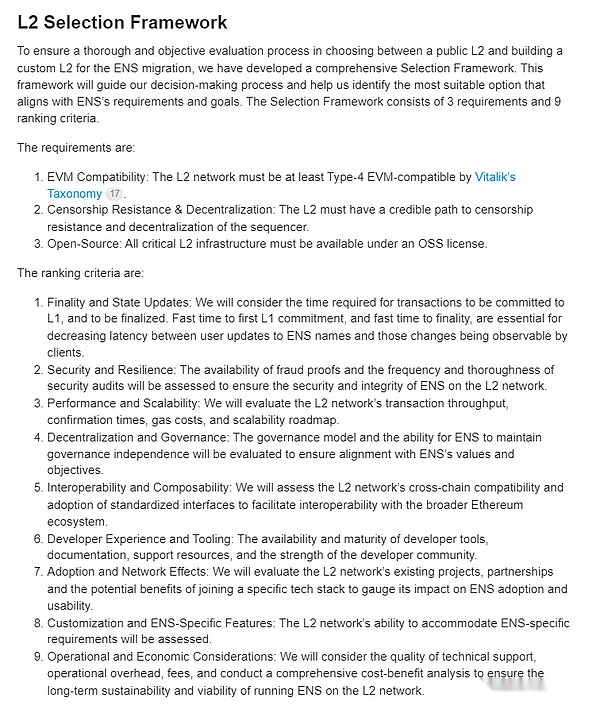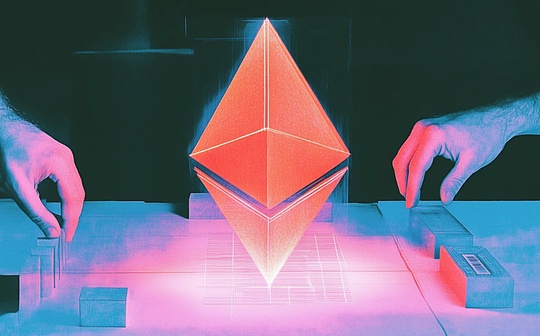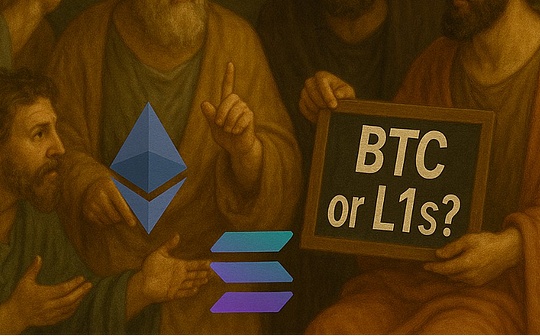
Author: William M. Peaster, Bankless; Compilation: Baishui, Bitchain Vision
With NFT-supported domain names, Ethereum Domain Name Service (ENS) has been the cornerstone of Ethereum application scenarios since its establishment in 2017.
Now, ENS Labs’ protocol administrators have just introduced their largest development proposal to date:ENSv2.
The proposal will extend ENS to the Layer 2 network that has not been selected to reduce costs, speed up transactions and enhance functionality.Here is a detailed introduction to the basics of the system and why it marks a major leap.
Why migrate to Layer 2?
certainly,The main motivation for transitioning ENS to L2 is scalability.
L2 performs off-chain transactions while ensuring data integrity on the Ethereum main network, thereby speeding up transactions and significantly reducing Gas fees.
Adopting L2 will make ENS easier to use by a wider user base and pave the way for new integrations, thanks to a substantial reduction in Gas fees for .eth domain registration and renewal.
However, it’s not just about cost and speed –ENSv2 is also a transformation opportunity.If approved, the system will introduce a new hierarchical registration system.

In other words, each .eth domain will have its own personal registry, rather than a single flat registry, thusMore flexibility and control over subdomains and ownership can be provided according to user needs.
also,ENSv2 is designed to facilitate smoother integration among various blockchains.With the combination of CCIP-Read gateway and compatible resolvers, .eth domains will be able to connect trustworthyly across different networks in unprecedented ways.
Layer2 Migration Plan
The migration to ENSv2 will be staged to minimize interference.
The initial phase involves deploying a new universal router interface and then deploying a new registry contract on L1 and L2.Ultimately, users will be able to migrate their names to L2 to enjoy lower costs and faster transactions, but migration is optional.The existing domain names will continue to function properly on Ethereum.
So the biggest question is which L2 will the ENS community choose?The ENSv2 technical design documentation mentions “ENS Chain”, but this may be just a tentative alternative name until the network is officially selected.
That is to say,ENS can create its own L2, such as on the Optimism hyperchain, or deploy directly to Optimism, Arbitrum, Base, Starknet, etc.
We’ll see what happens, but ENS Labs proposes a selection framework to guide this decision, covering requirements such as Ethereum Virtual Machine (EVM) compatibility to strong development tool options and ranking criteria.The ENS DAO will make a final approval decision here.

Outlook
By reducing Gas fees and speeding up transactions, ENSv2 sets the stage for the .eth name to become more affordable and efficient, democratizing access to ENS services.
This shift, combined with a new hierarchical registration system and CCIP-READ, could lead to an explosion of ENS-based and new applications across a variety of different chains.
As on-chain ecosystems develop, the ability to manage and resolve domain names easily and economically across multiple chains will become increasingly valuable.ENSv2 can be a key component of this connected future, supporting everything from encrypted social networks to complex financial applications.
This upgrade looks set to markThe beginning of the mainstream era of ENSand support a large number of newcomers in the coming years.







